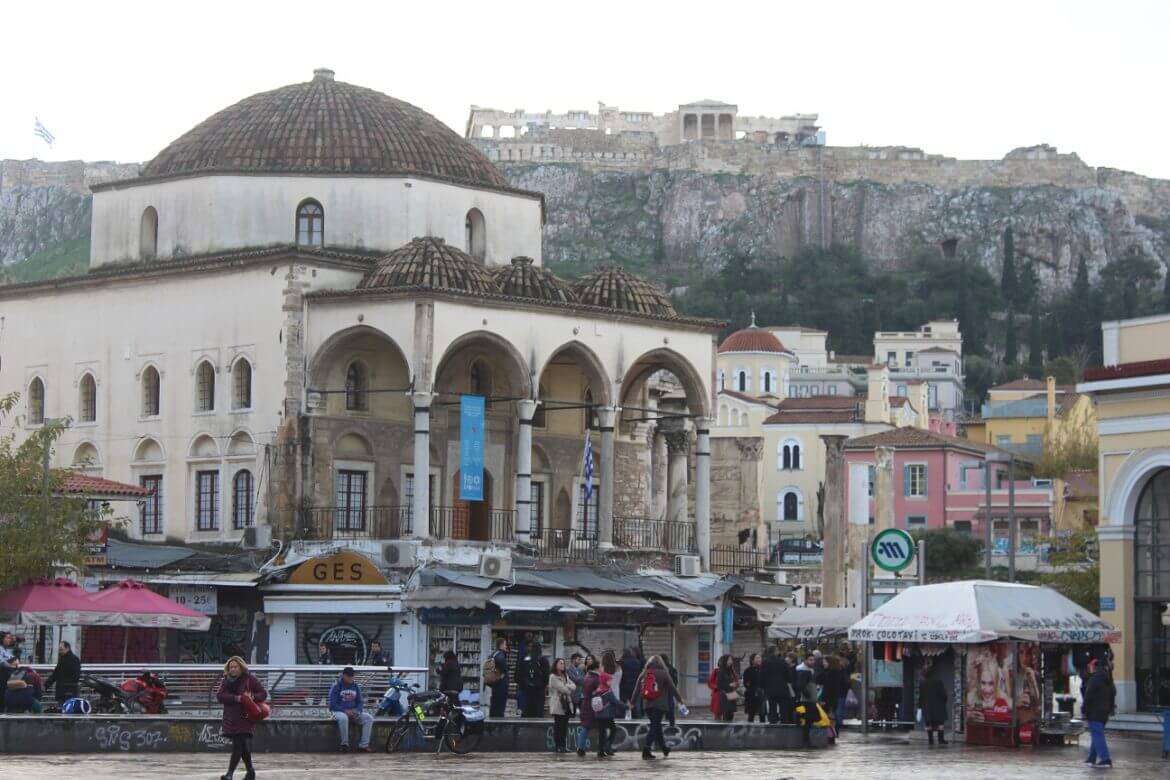
Most tourists and world travelers associate Athens with Acropolis and the Legends of Olympus. Nobody would even think of going to Athens without climbing the famous hill to see the crumbling columns, even if you can see them from any part of the town. But Athens is much more than this. It has many more cultural and historical sights and is a huge fully functional modern city, with over 5 million people living there out of the 11 million in all Greece. One weekend in Athens is long enough to taste a little of what it can offer you and short enough to make you want to stay more. The famous Greek coffee, the delicious gyros, the wonderful atmosphere in the Plaka district after the sun sets, the mythology soaked in every stone, the friendliness of the Greek people and the more or less friendly cats are just some of the reasons you will want to go back.
Is Athens for you?
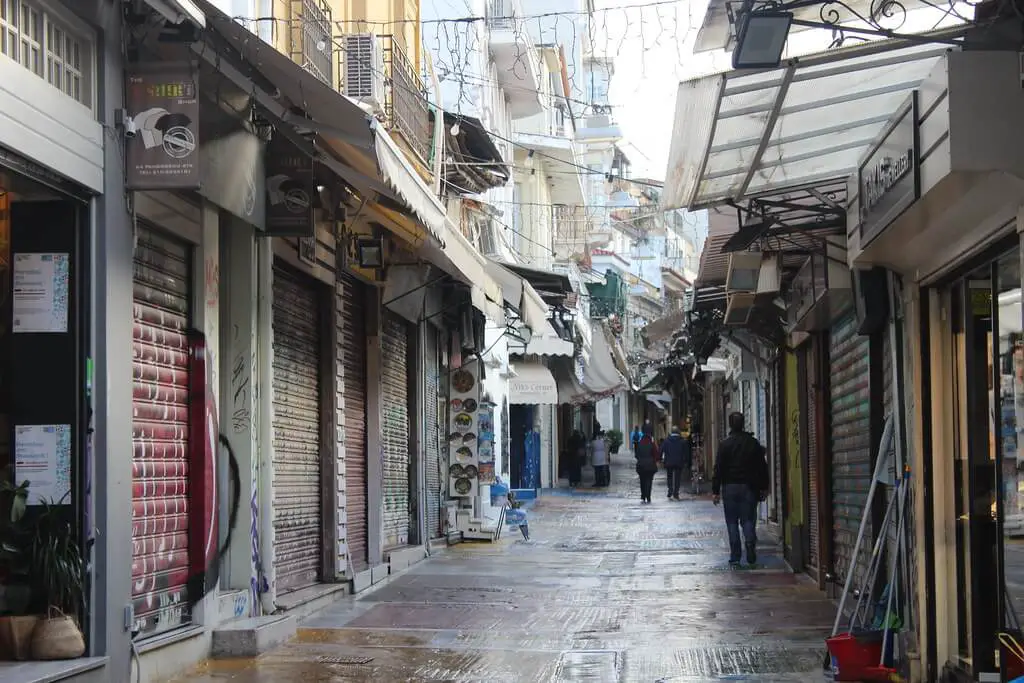
When you tell somebody you are going to visit Athens, they won’t miss the opportunity to let you know how dirty it is and that you are making a big mistake. Don’t change your mind! They almost made me change mine and I would have lost a great weekend. They are partially true. The city is cleaned up regularly, but it gets so crowded in high-season that it doesn’t stay clean for long. To avoid this, you could go in December or January, when there are not so many tourists. We were in December and it was great. One person in the group had visited the city in October and was impressed by the fact that it was so much cleaner in December. Also, in summer, because of the high temperatures, it can smell pretty bad. Again, make it easier for Athens to win you over and go off-season.
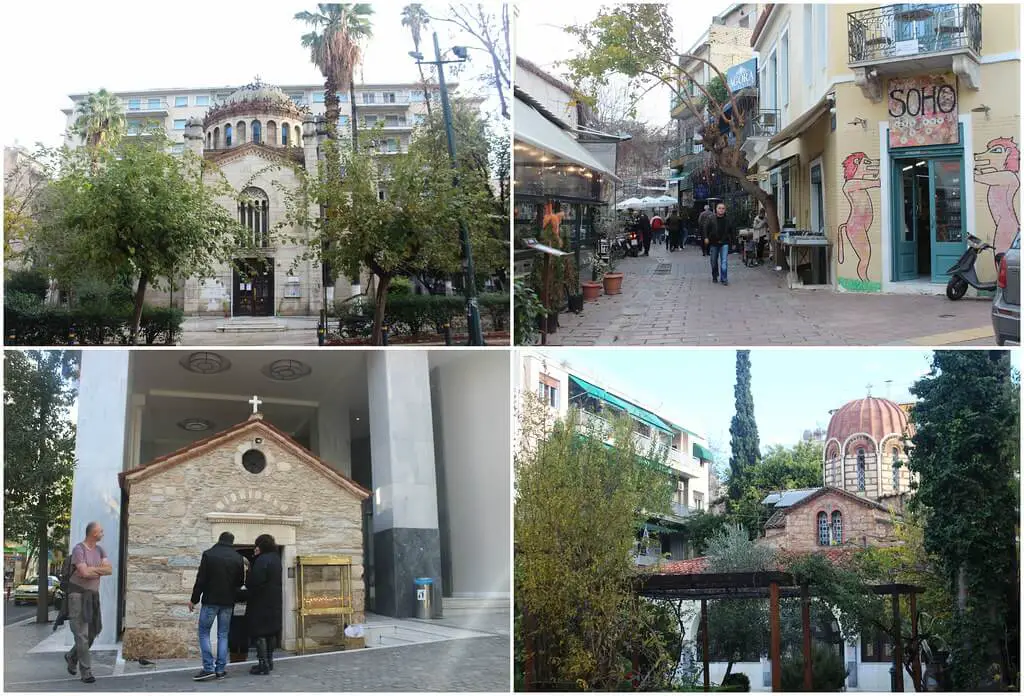
Other people will complain about the new modern buildings that stand along beautiful older ones and some on the point of collapse, with the walls full of graffiti. Go with an open mind, don’t forget that Greece has passed through some difficult times lately and be ready to accept its cultural diversity. It does indeed look like a Babel tower from here to there, but it is all part of Athen’s charm.

How do you get to Athens?
Due to low-cost companies, it has become very cheap to fly to Athens. We’ve bought the tickets with Ryanair from Bucharest to Athens with just 9.99 euro one way. The same offer applied also to other cities. As you can see, it’s not necesary to break the bank in order to buy your ticket. From the airport into the city, you can either take the train, line number 2, for 10 euro (more than the plane ticket, actually) or the bus for 6 euro, as we did. Students only have to pay half of the price. Every 15 minutes between 5 am and 12 am, bus X95 will take you from the airport directly to Syntagma square. Don’t worry, you will be able to see all the time where you are and how much you have left on a digital screen. Besides, it is the last stop. Very easy to use. It takes about one hour, as there are 35 km from the airport to the city center.
Where to stay in Athens?
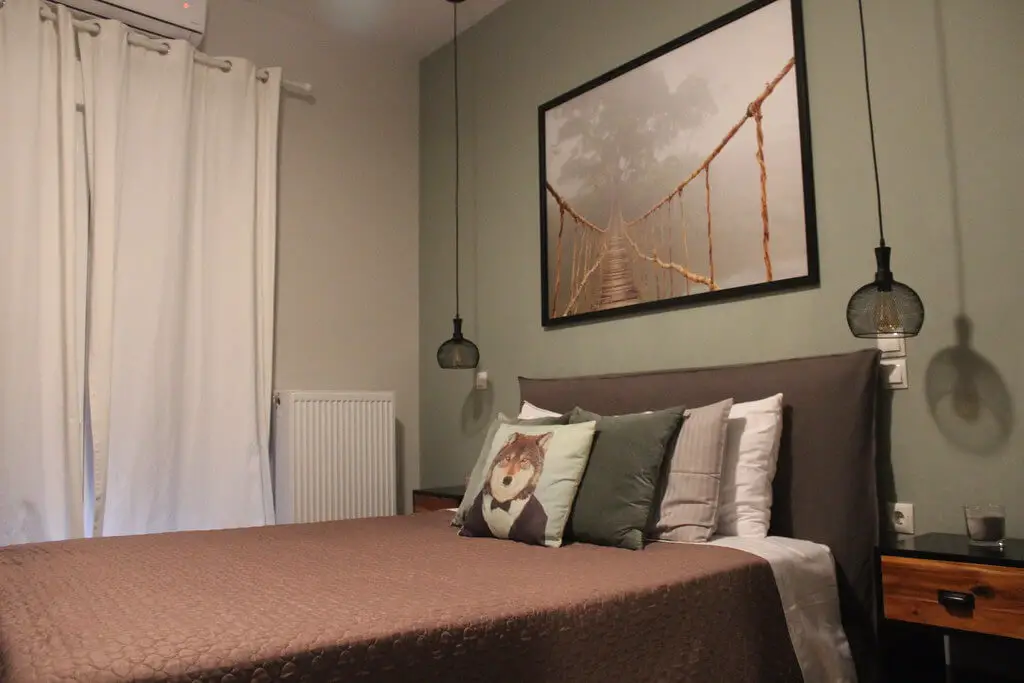
In Athens, we’ve stayed in an apartment that we had booked on booking. SunBow Olive Apartment looked exactly as in the photos, which means very nice, was clean and pretty central. Also, the owners left some small treats for us: coffee, tea, jam, butter, juice, which made for a tasty and filling breakfast. We paid 54 euro per night for 3 persons. The apartment can accommodate up to 4 people.
What to see in Athens?
The Acropolis
The Acropolis is, in fact, the hill in the middle of Athens on which the Parthenon, the Temple of Nikis Athens, The Erechteion, devoted to both Athena and Poseidon, the Theatre of Dyonisos and the Theatre of Herodes Atticus (still used for festivals) stand.
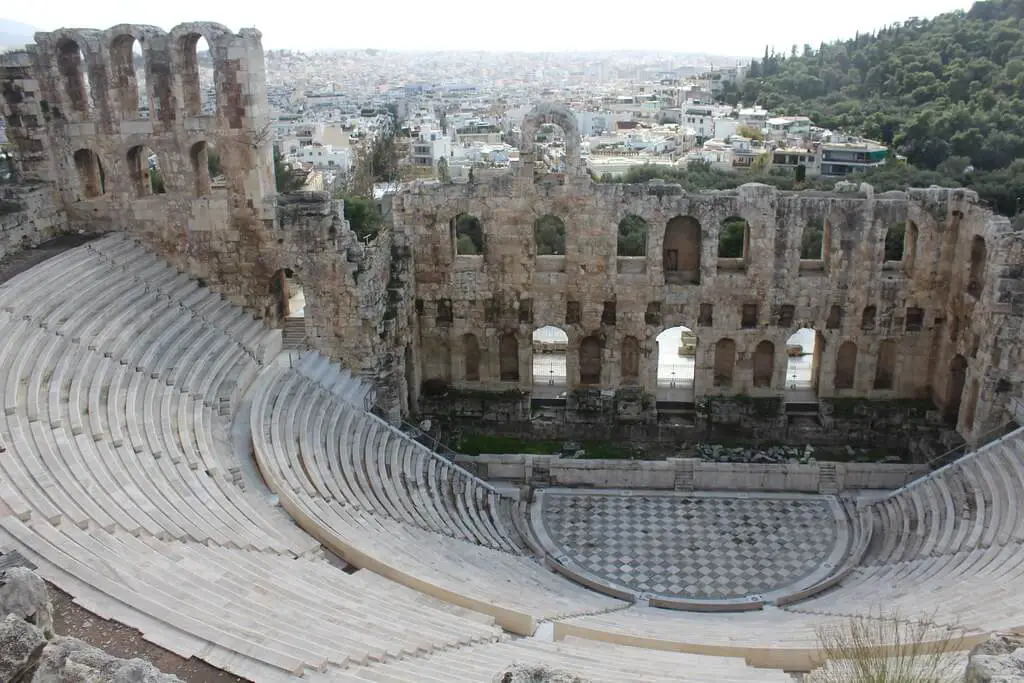
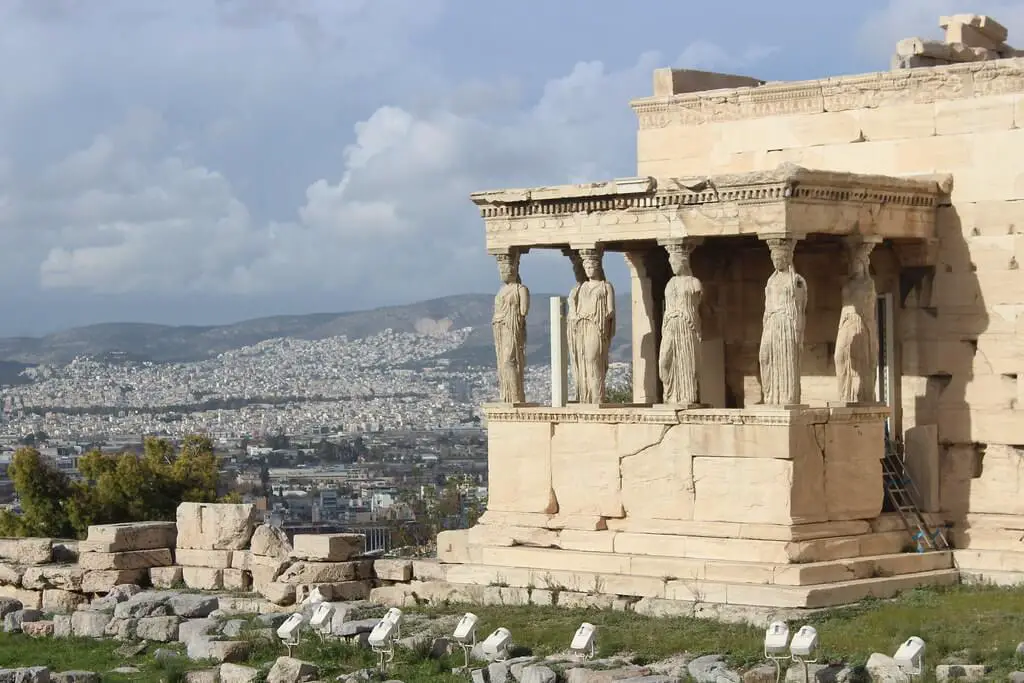
The entire complex will take you a few hours to visit. If you want to avoid the crowds, go as early in the morning as possible, in order to get out before 11 o’clock. Also, keep in mind that you won’t be able to stay up there until late at night as when the schedule ends, the guards will look for the people left and kick them out. Wear comfortable shoes and take sunglasses, sunscreen, and water with you. Make sure to get to the view points for some outstanding views over Athens.
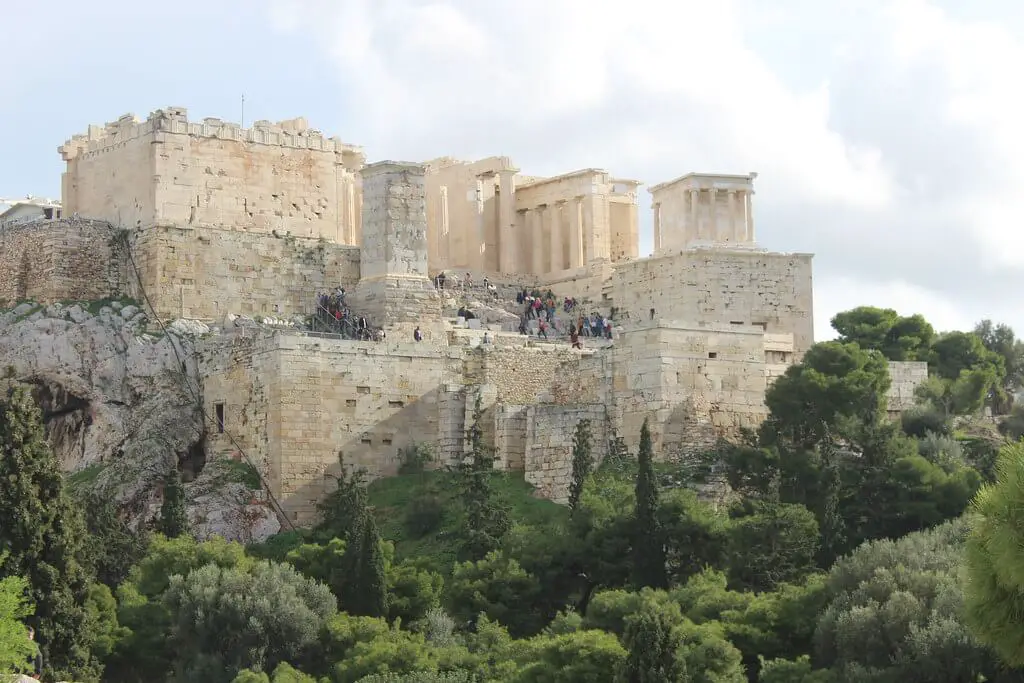
The star of the complex is the Parthenon, dedicated to goddess Athena in the 5th century BC. Since then, it has been not only a temple but also a Christian church and even a mosque. Unfortunately for visitors, it has been in an eternal restoration since 1983. This means it is really hard to get a good photo of it. You will have better luck from the city, as the Parthenon stands on top on everything else. There is even a law that does not allow anybody to build something taller than it. At night it is beautifully illuminated so that it can be seen from any part of the town, day or night.
The change of guards
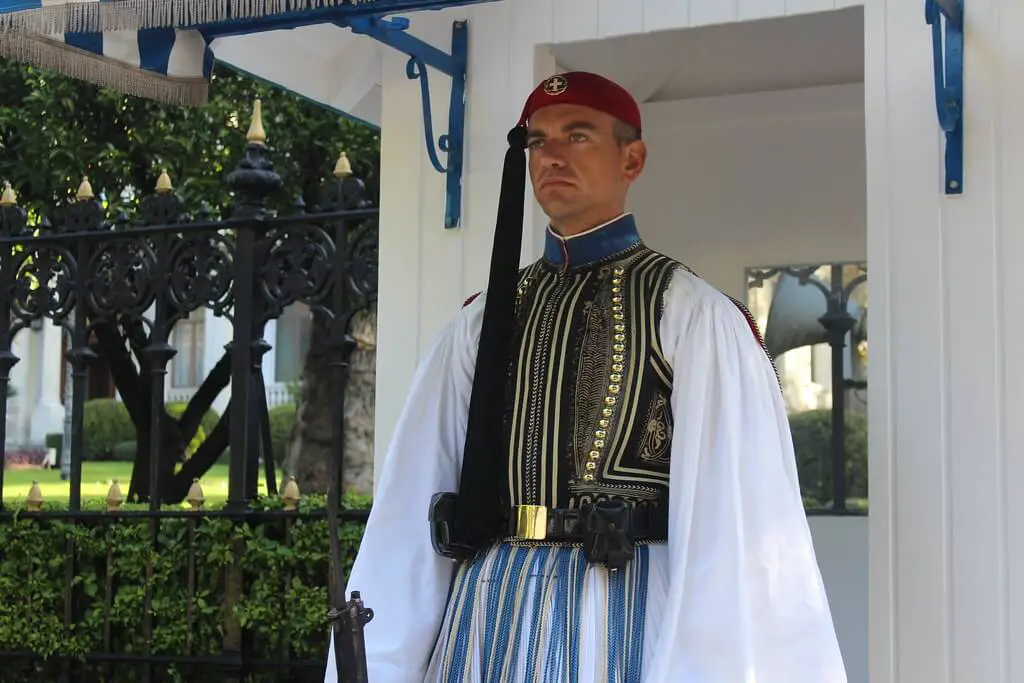
The Evzone guards watch the Tomb of the Unknown Soldier in Syntagma Square in traditional uniforms. These include short skirts and shoes with pompoms (tsarouki). Theis skirts have exactly 400 pleats, one for every year of turkish domination. Every hour, 24/24, the guards change in front of the Parliament with a very short ceremony. They have a designated route marked on the pavement to get to the barracks and are not allowed to change it or talk. If you see any of them walking towards you, make sure you are not on this route, as they will knock you over.
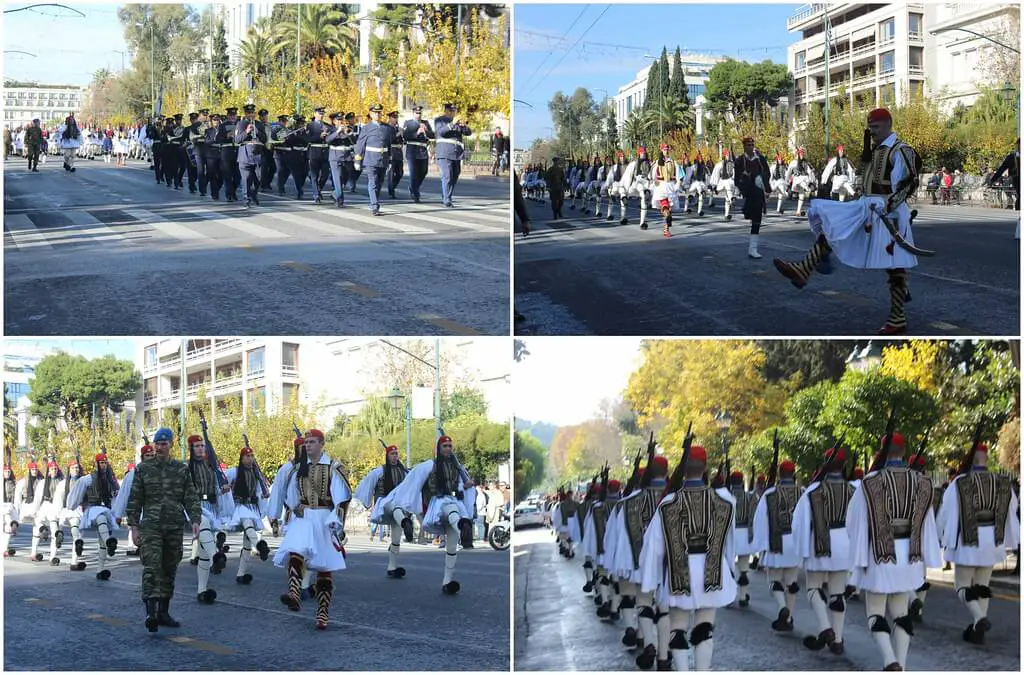
The real show is on Sundays at 11 am. If the weather is good, all the guards will march around the Parliament with the marching band and everything. The shoes of the guards have metal on their soles and make a specific sound. The original shoes were modified by King Otto, who accepted to rule over Greece but wanted horses, as he had in Germany. As this was not practical in Athens, because of the hills, he decided to change the shoes and have the guards march in them to sound like horses. If you want to take a photo with one of the guards during their watch, you can do so, but it must be decent and you are not allowed to make fun at them. In the end, King Otto proved to be a very bad choice and was exiled. Today. the king has no rights of any kind in Greece.
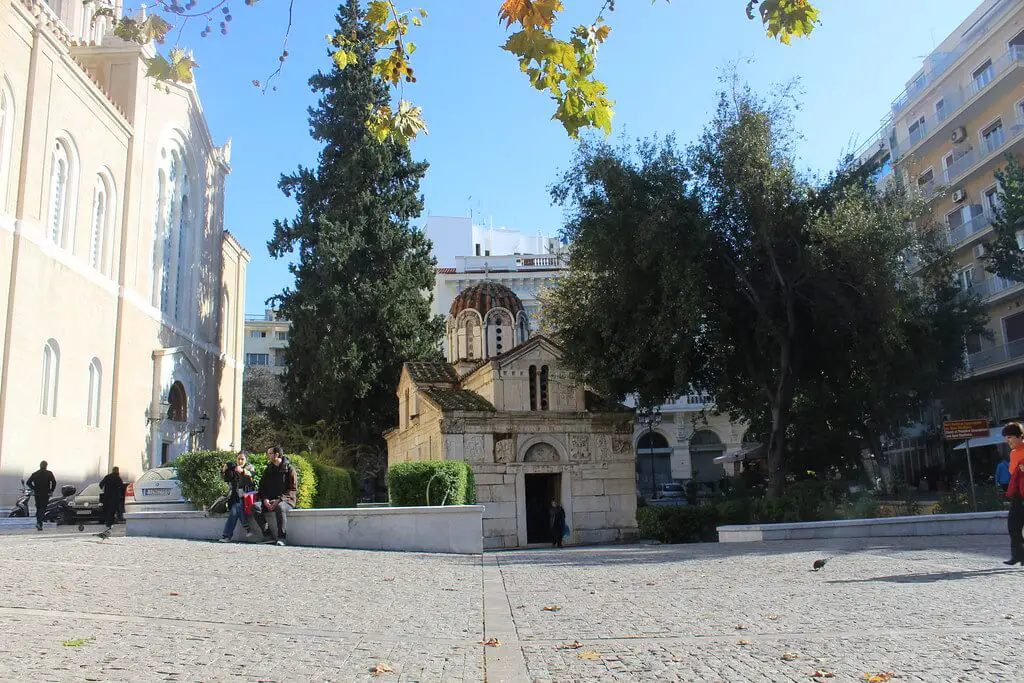
Hadrian’s Arch
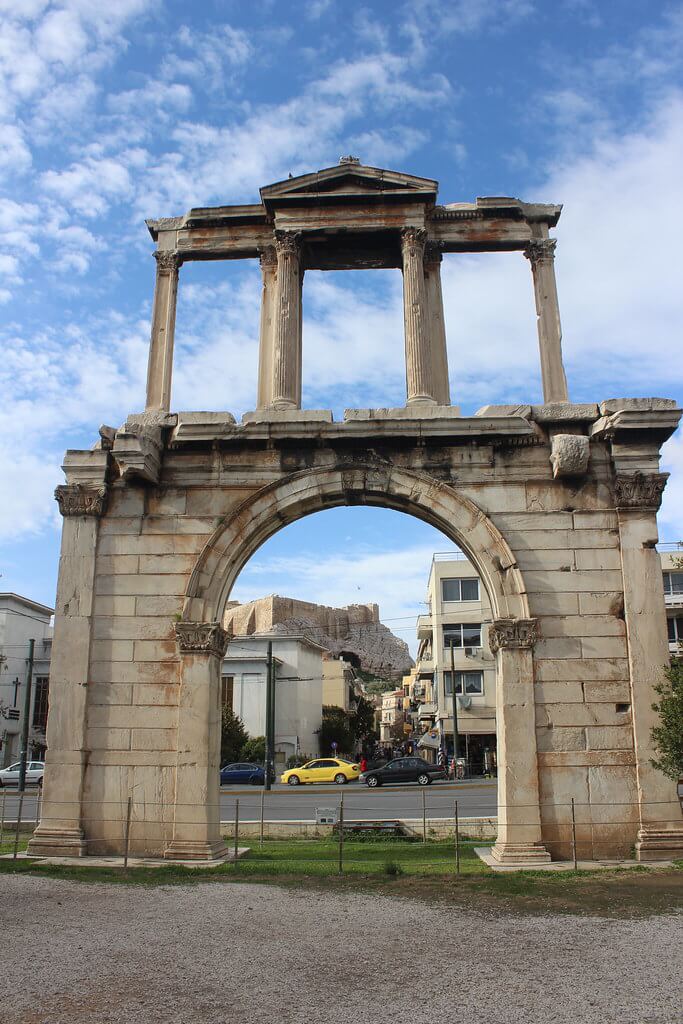
The arch was built by the Athenians in honor of Hadrian in the 2nd century. Back then, it stood between the old part of the town and the new one. There still are two inscriptions on it that reflect this. On the side towards the Acropolis is written: “This is Athens, the ancient city of Theseus”. On the side facing the new city, it says: “This is the city of Hadrian and not of Theseus”.
The Temple of Zeus
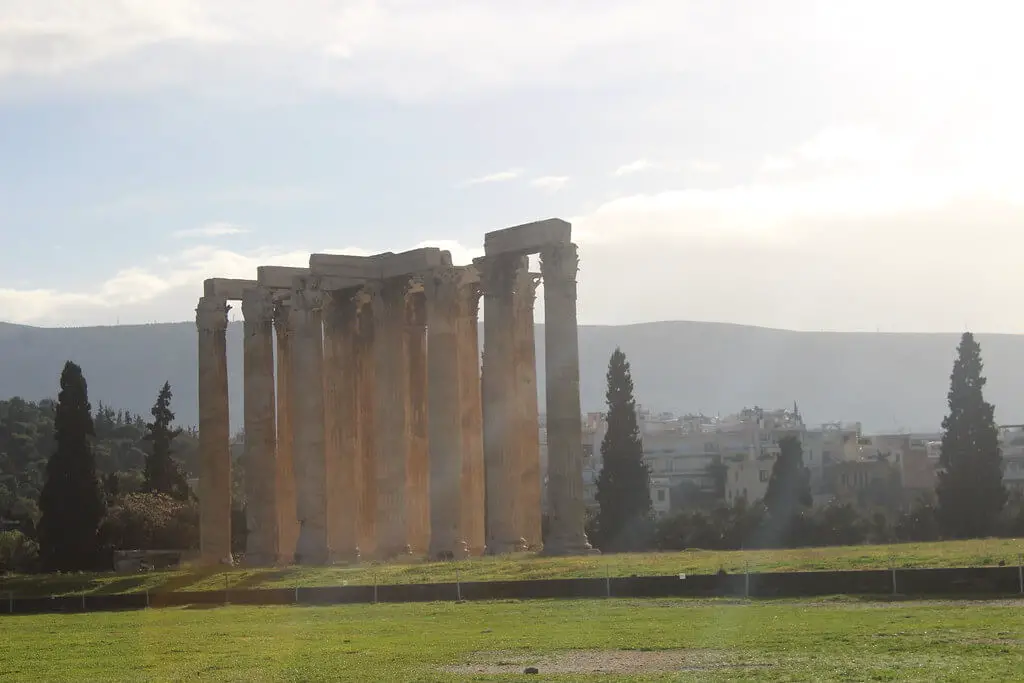
This was once the largest temple of Greece, with over 104 columns. It was completed during the reign of Emperor Hadrian. Unfortunately, soon after it was invaded by the barbaric tribes. It was never restored and its columns were soon used as a source of material for other buildings. Today there are only 16 columns still standing, but it is still an important architectural site of Greece.
Panathenaic
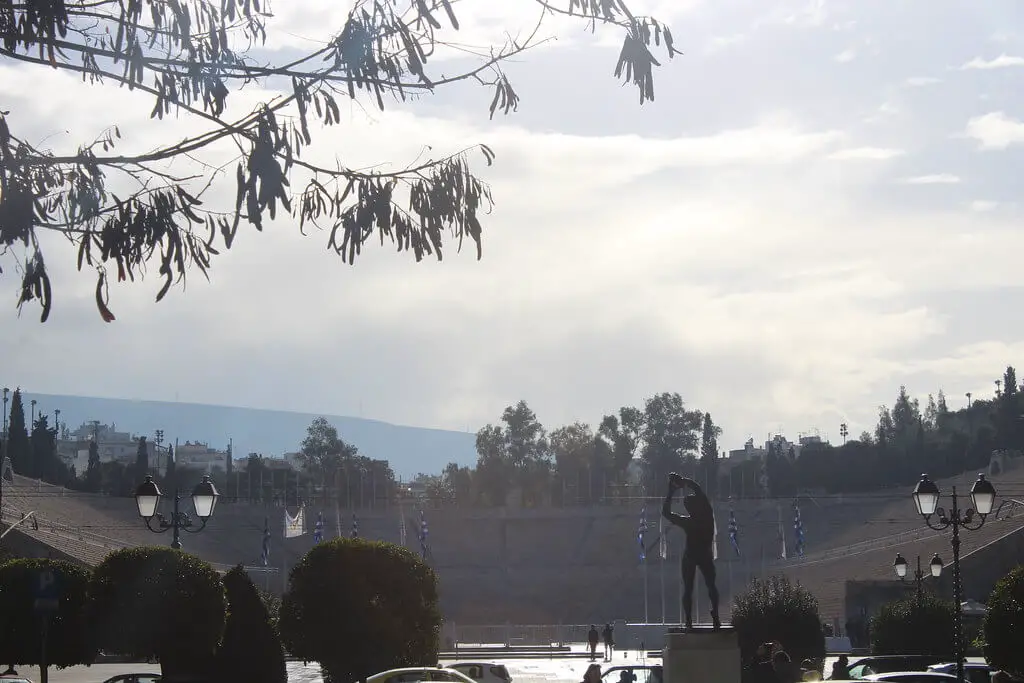
The Olympic Stadion was built entirely out of marble from the Greek mountains in 1896, on top of the old one used in the 4th century BC for the Olympics. This is also the place where one of the oldest sport tests in the olympics was instituted, the Marathon. It commemorates the run of Philippides from Marathon to Athens after the battle in the 5th century BC to report the victory. He ran the entire distance without a stop and burst into the stadium. He announced the victory with his last words.
Monastiraki square
The most crowded place in Athens day or night. You will literally have to fight your way through in any season. It is also the start point of the flea market. One will find there anything from old ceramics in good shape, to old phones still working, books, furniture, vinyls, fabrics, watches, and medals. The climax is on Sunday morning. If you’d like to exercise your negotiation skills, this is the right place. Unfortunately, there are also a lot of beggars and gypsies on these streets, even if they did not try to harm. Beware your pockets.
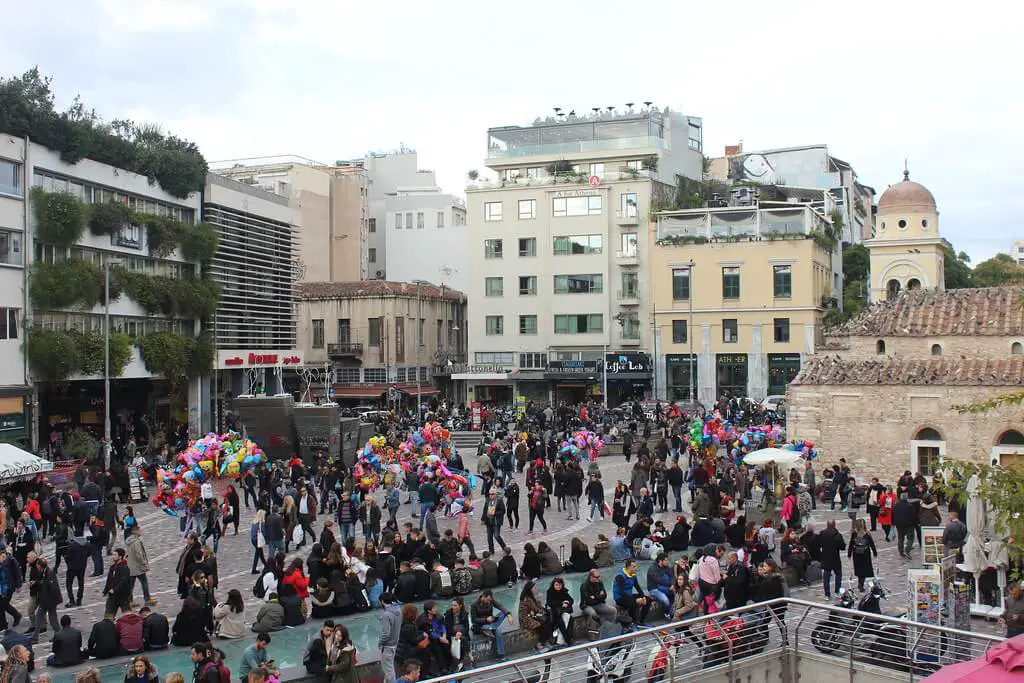
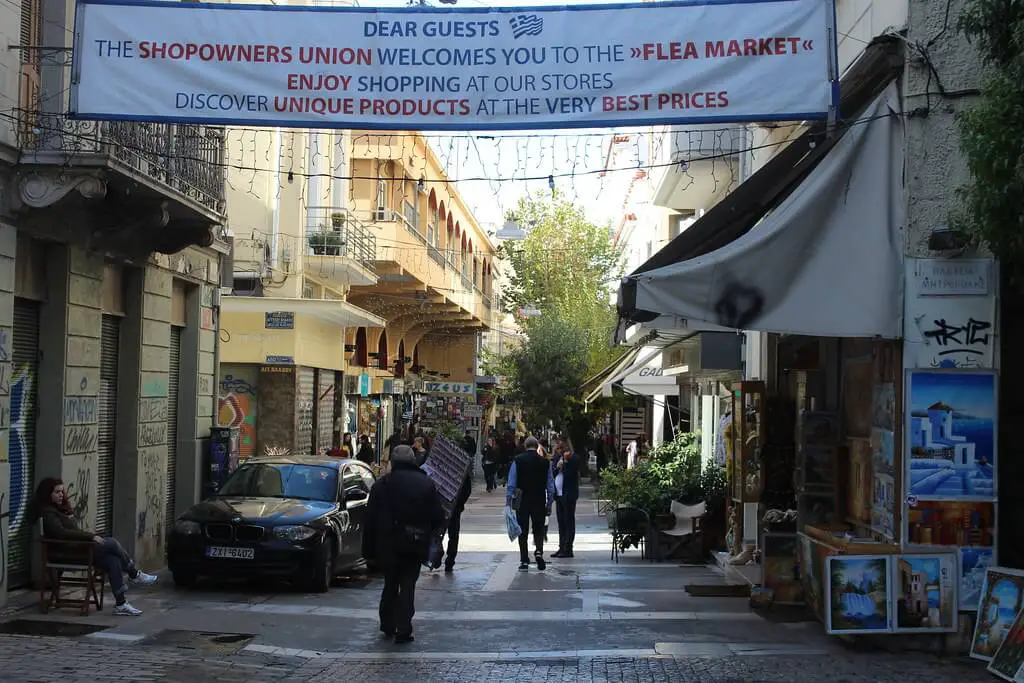
Ancient Agora
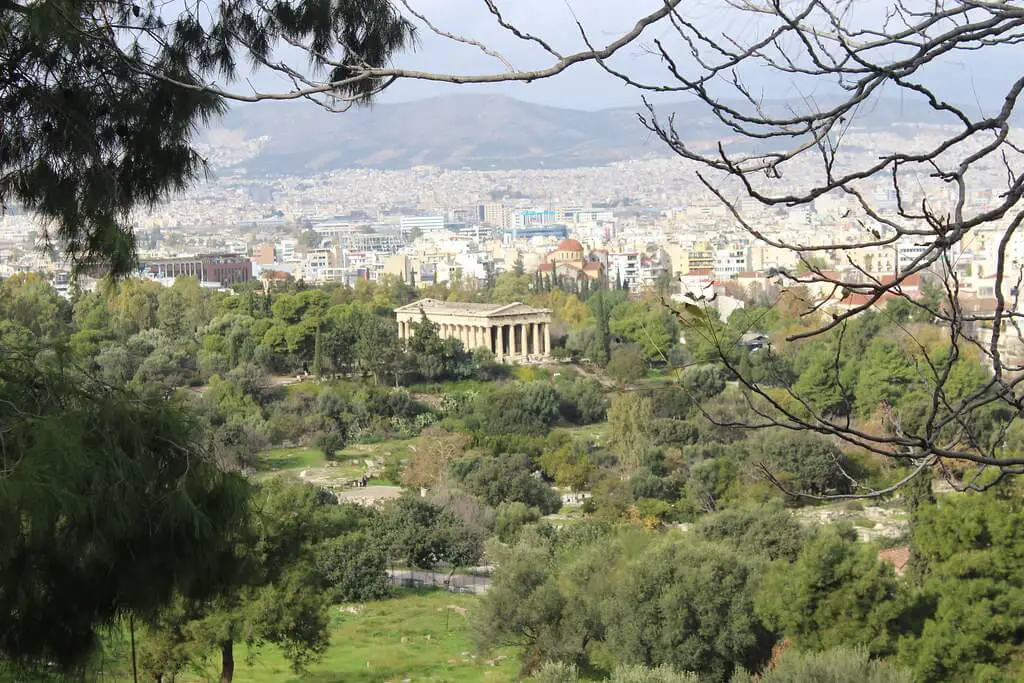
As you’ll probably soon notice, there is not much left out of the magnificent temples of the gods. They’ve been burnt down, changed into churches and mosques, sometimes even by knocking them down and using the marble for new buildings. The best-preserved temple is the one of Hephaistos, the ugliest of the gods, the blacksmith, that was not allowed to have a temple up on the hill. It seems that in the end, he was the luckiest, as his temple is the only one that still looks like one. Besides, just like in “The Beauty and The Beast”, he got Afrodita, the most beautiful of the goddesses. In the same complex, you’ll find the Stoa of Atolos, fully restored, that hosts a small museum.
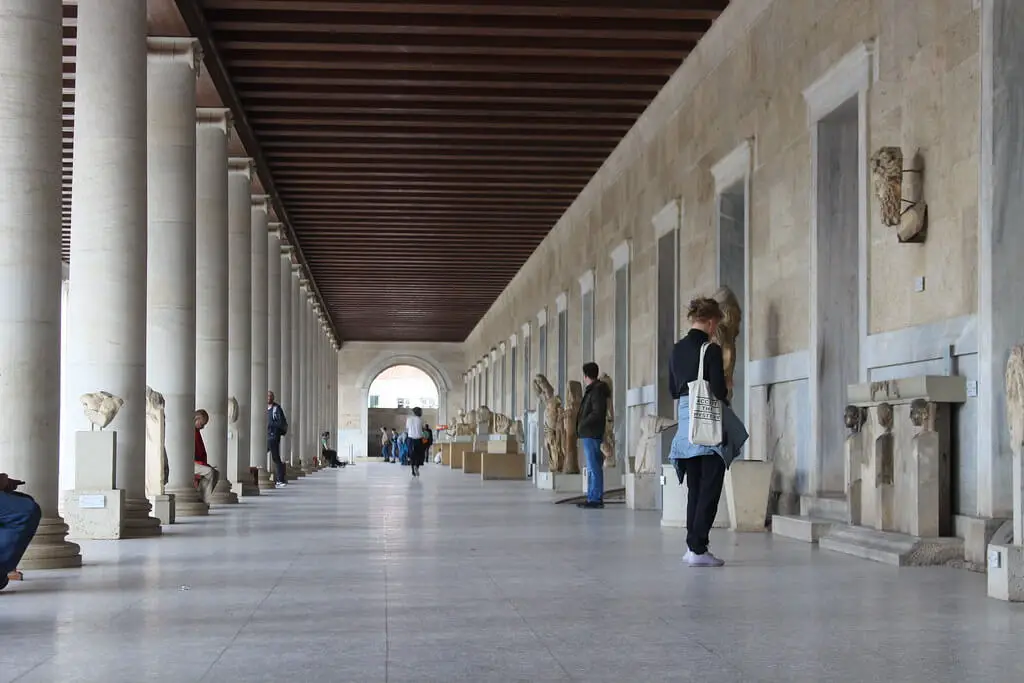
Plaka
The cutest neighborhood in Athens spreads at the base of the Acropolis hill. It consists of tens of old winding streets. Locals and tourists wanting to have fun gather at the restaurants and terraces there.
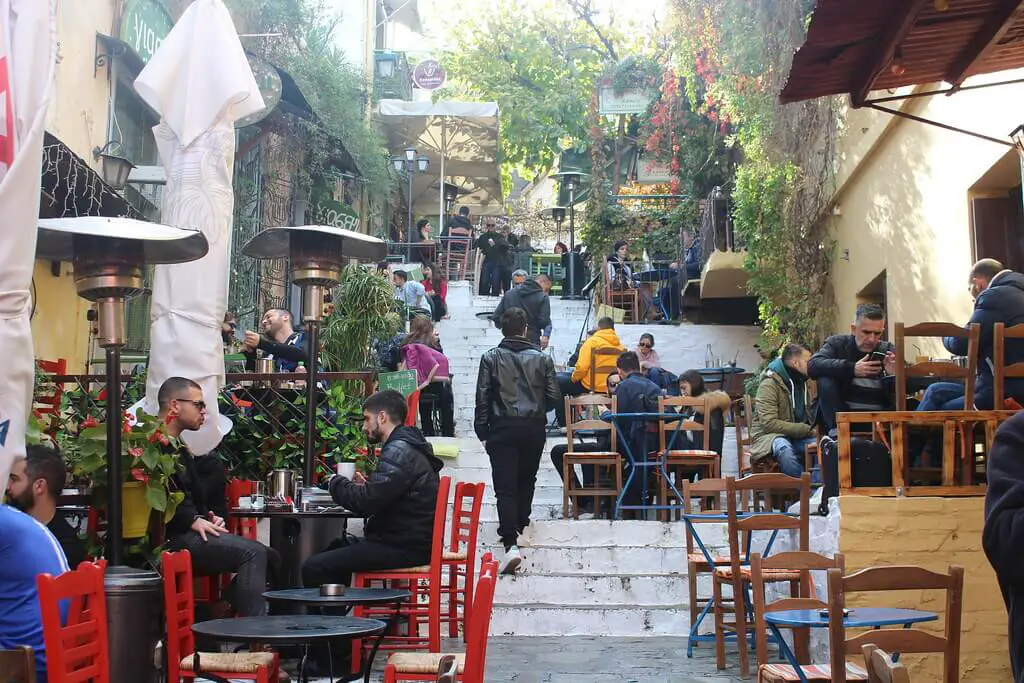
Lycabettus hill
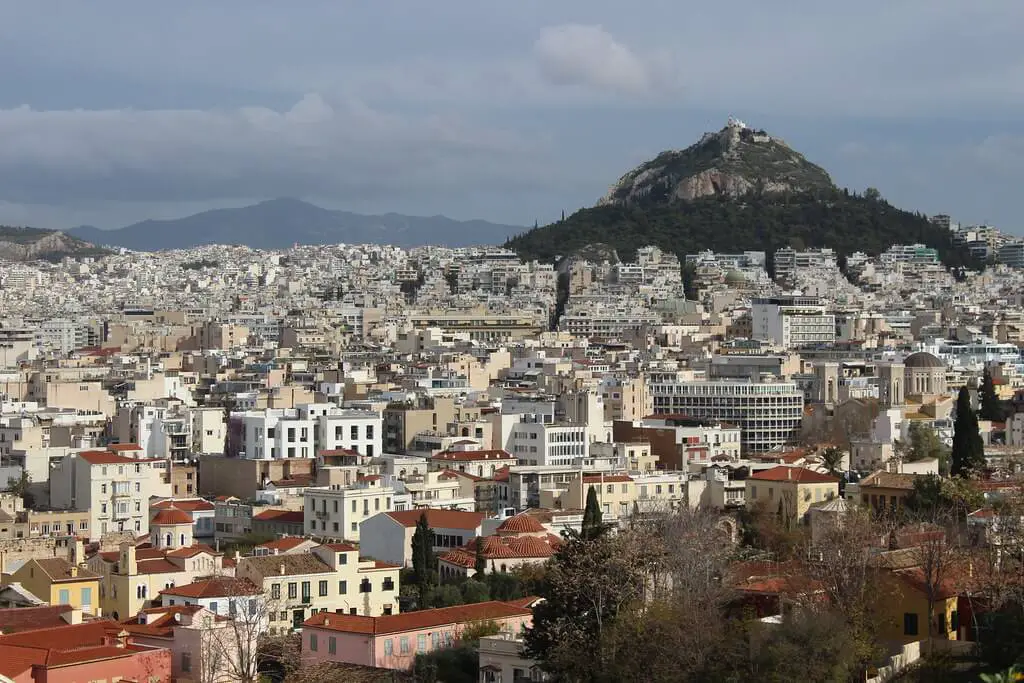
For another great view over the entire Athens up to the Aegean Sea, grab a cab or climb Lycabettus hill. You can take the funicular to make it easier. It costs 5 euro to go up or 7 euro to go up and back down. It is said that this hill was created by goddess Athena by mistake. While building the Acropolis she dropped a block exactly in this place.
Other sights
- Zappeion, built for the revival in 1869 of the Olympic Games, next to the parliament. It is nowadays used for expositions and conferences.
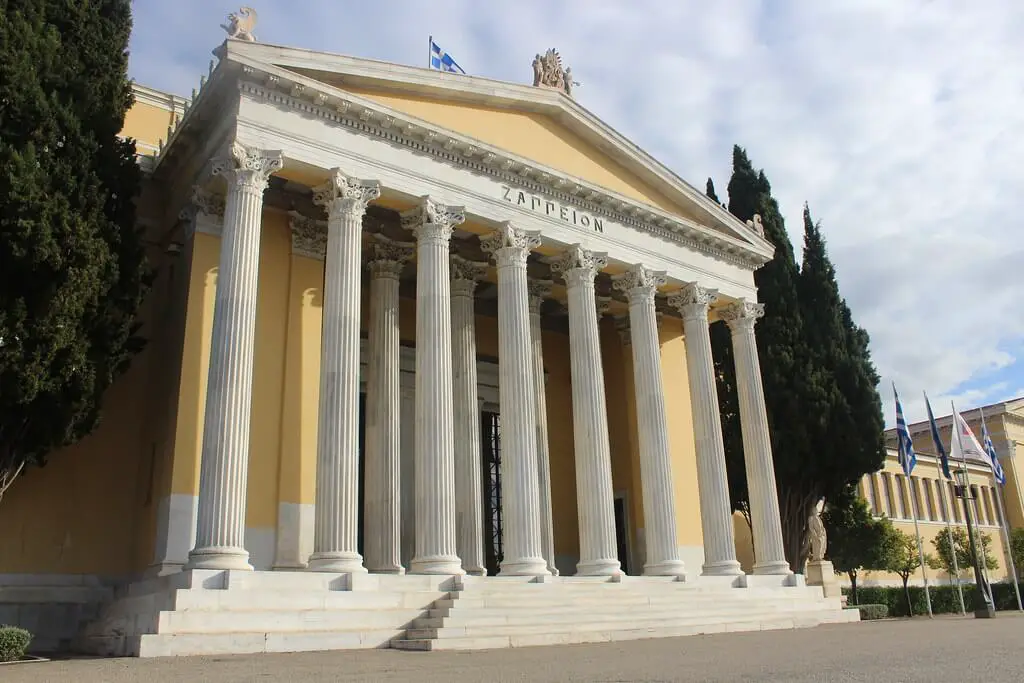
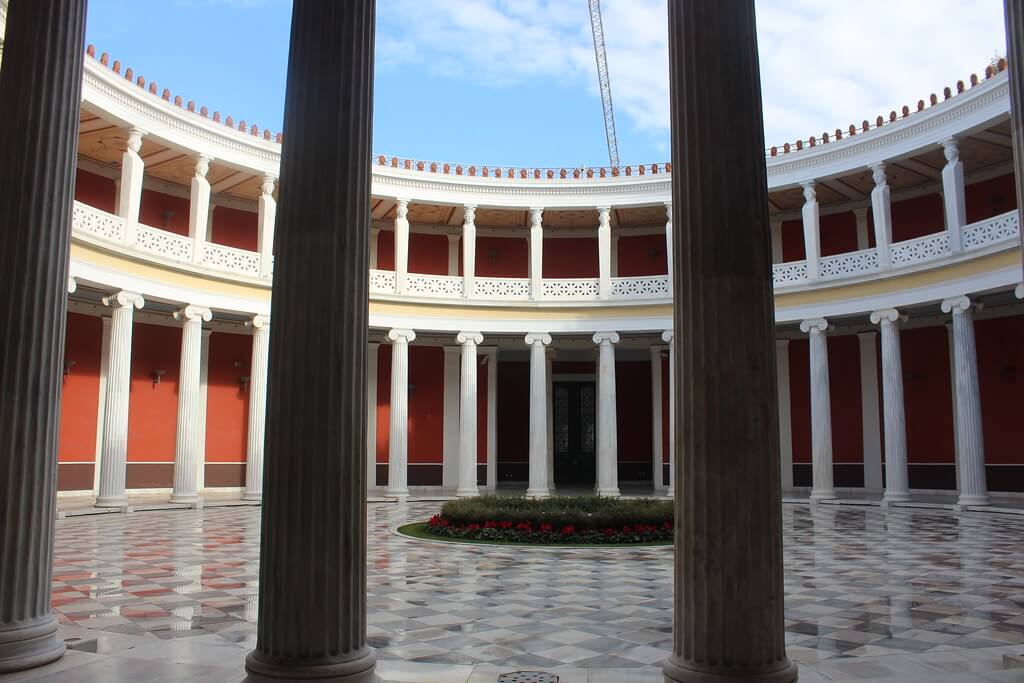
- The National Gardens
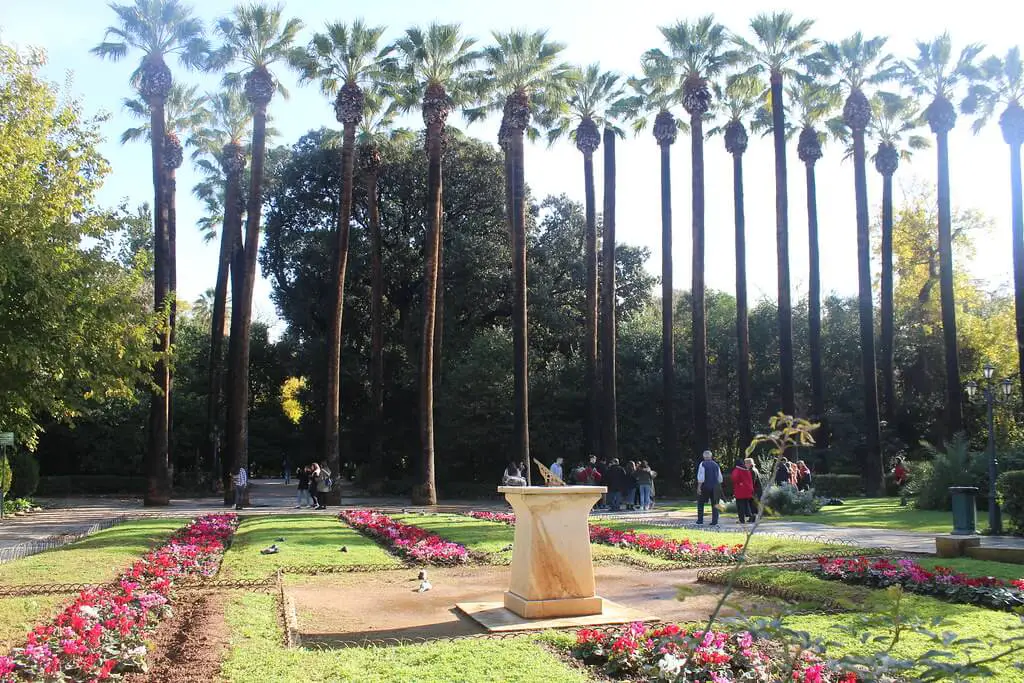
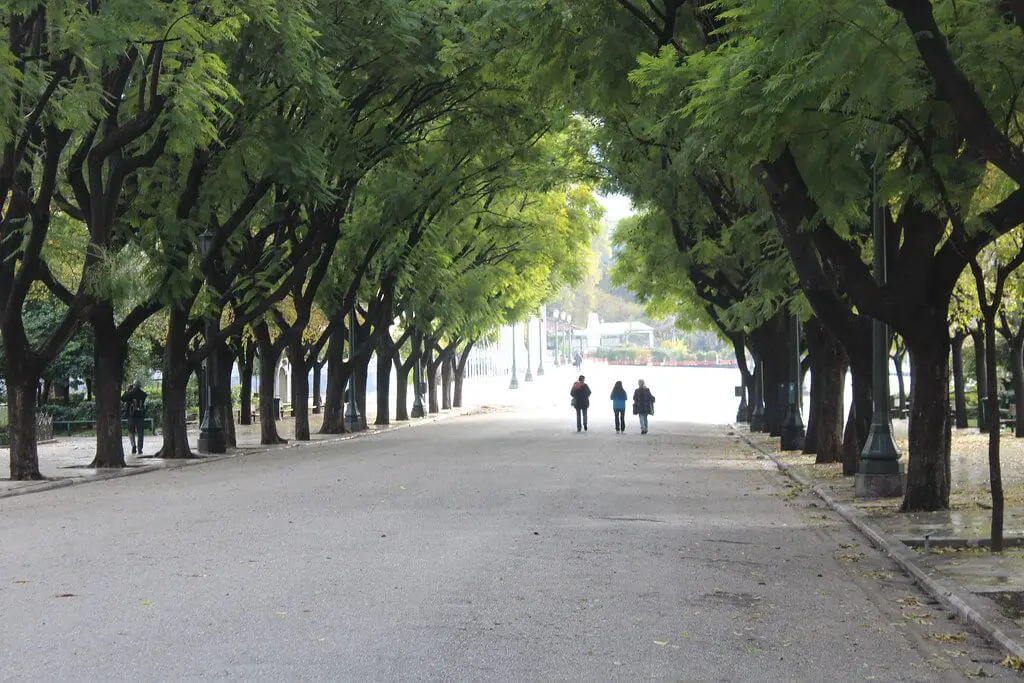
- The subway station at Syntagma Square. When digging for it, artifacts were discovered that were left there, for everyone to see.
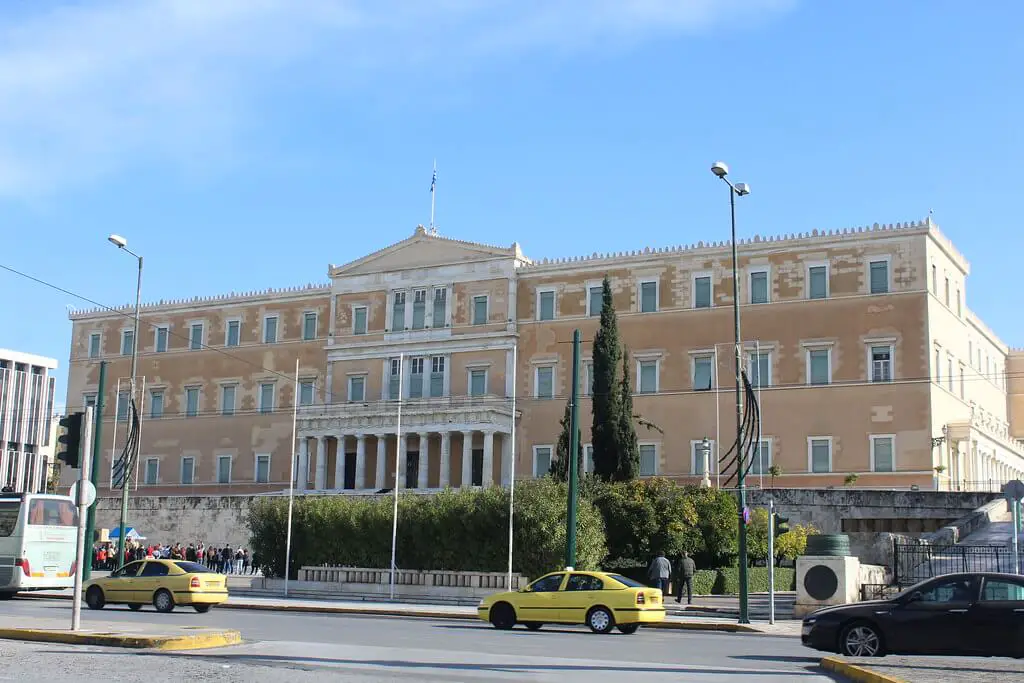
-
- The Library of Hadrian
- Piraeus port, the best place to try fresh sea fruit
- The New Acropole Museum
- The Roman Agora with The Tower of the Winds (note the winds represented as older and younger men and the holes), fully reconstructed. You can see it just fine from behind the fence.
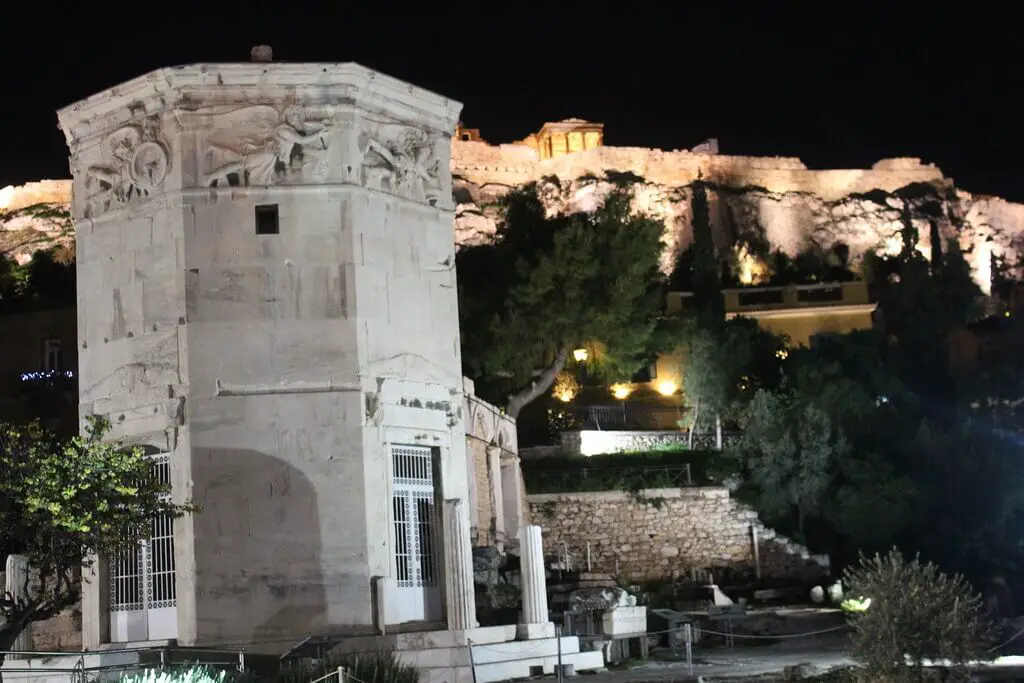
-
-
-
- Ermou street, that starts at Syntagma Square. It’s a pedestrian and very animated shopping street.
-
-
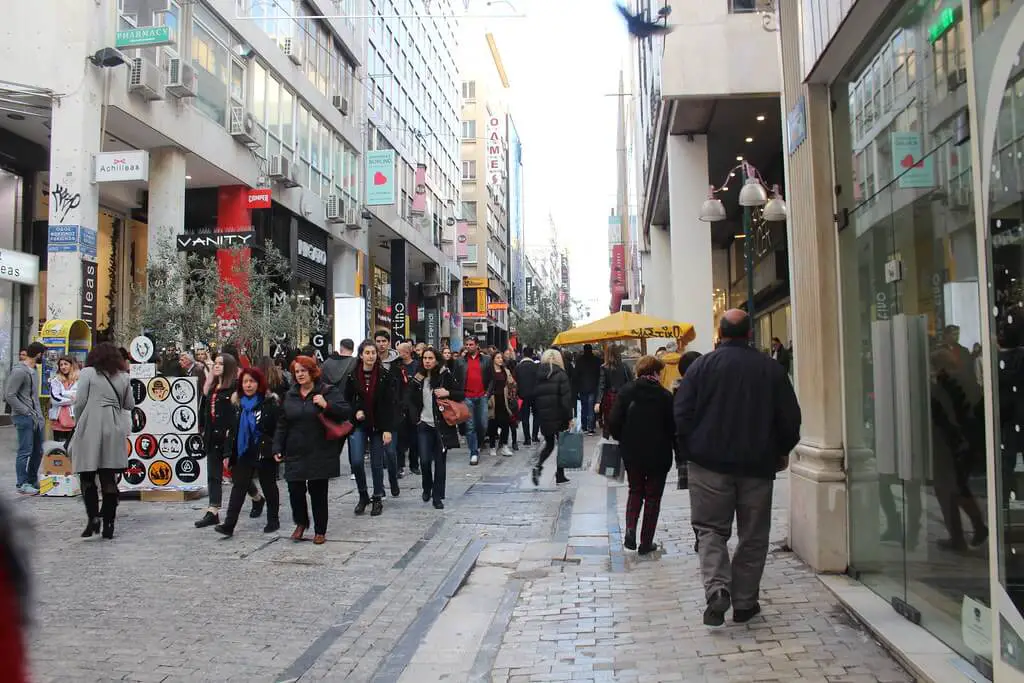
-
-
-
- Pittaki street and Little Kook restaurant. During Chrismas, it is decorated to the nines inside and out. A few years back, the street was decorated by the locals with lampions, but these consumed a lot of energy. As the city hall did not agree to pay for it, they took them down. All that’s left now is Little Kook, that has a different theme every season. It is a pity that the city hall did not want to get involved, but it still looks nice.
- A traditional market, but this is not for everyone. There will be hawkers with prawns, fresh fish, whole sharks, pig feet, hanging dead birds and entrails, skinned lamb, cows’ heads. If this is too much for you, stay on the outside and enjoy the nuts, fruits and mountains of spices.
-
-

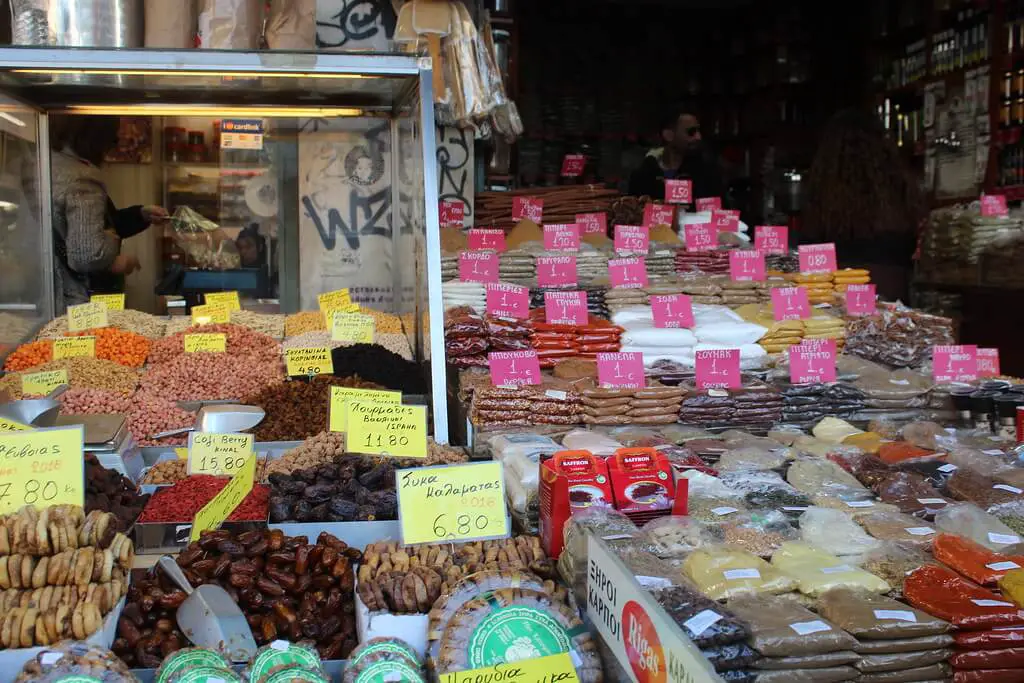
What should you know before visiting Athens?
-
-
-
- There is a combined ticket for the Acropolis, Ancient Agora, Roman Agora, The Temple of Zeus, Hadrian’s Library, Kerameikos, and Aristotle’s Lykeion. It should cost 30 euro for adults and 15 for students. However, students got in free when we were there and adults were charged half the price as it was the off-season.
- Some of the sights can be seen just fine from the outside, like The Temple of Zeus, Hadrian’s Library and Roman Agora. If you have to choose, I suggest you visit Acropolis (you would anyway, even if I didn’t suggest it) and Ancient Agora.
-
-
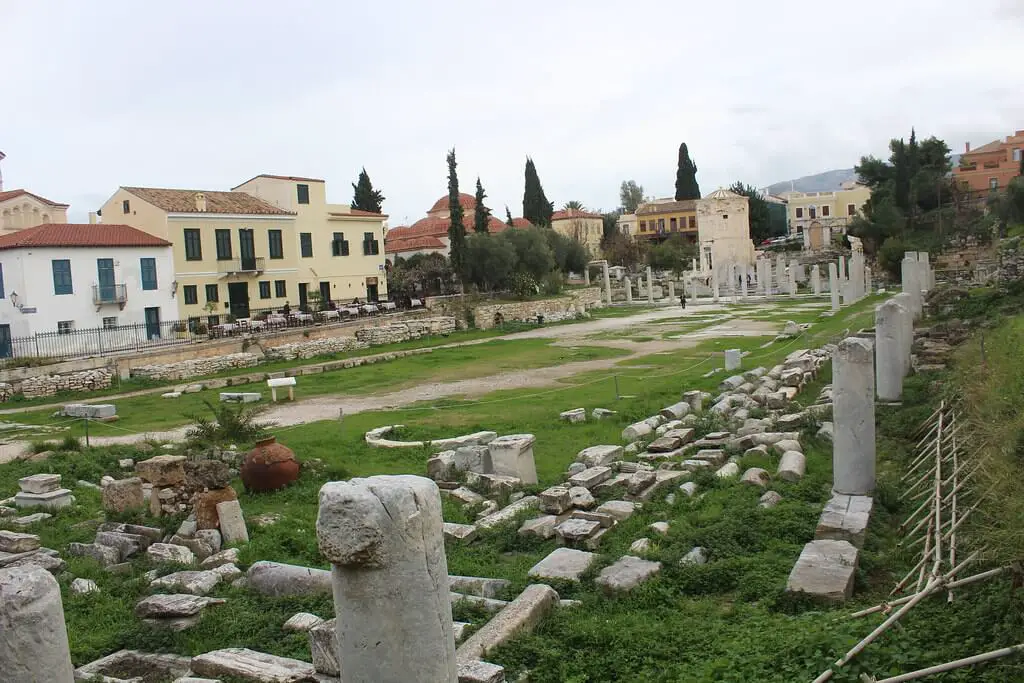
-
-
-
- There is an Athena city pass, but I found it far too expensive for what it offered.
- The oranges that you see on the trees are not edible, but sour and purely decorative. However, the lemons are good to eat. This was confirmed by an Athenian.
- I recommend you join the free tour that starts daily at 9:45 at Hadrian’s Arch. If you look up the Internet, there are more free tours, but we tried several and this was the best one. We’ve done the tour with Alex, who told us more than any other guide about Athens. The tour took a little more than 3 hours and he even took us to a great spot to watch the change of guards.
- If you are just a little hungry and in a hurry, do as the Athenians do and grab a traditional bread ring with sesame called koulouri. You can find it around any corner and will cost you only 0.5 euro.
- If you visit the central market, skip the restaurant in it. It has special prices for tourists, the food has almost no taste and you will pay more than at a touristic restaurant. It is a tourist trap as all the food guided tours go there. We were there, was the worse meal we had that weekend and the priciest. We ate better in Plaka and next to Ancient Agora for less money.
-
-
In the end, I will tell you two legends, as Athens is the land of the gods and every stone there has a story to tell.
The Legend of Athena
As we well know, Zeus used to come on Earth and seduce women. He was told not to have an adventure with a woman named Metis, as their child would bring his death. Zeus, of course, did not listen, just like a child. He went on and seduced Metis. Afterward, he had doubts and decided to get rid of her. He asked her to change into a fly (which apparently she was able to) and swallowed her. After a while, the head of Zeus hurt so bad that he went to Hephaistos and asked him to cleave his head open. As he did so, Athena came out fully grown and armed. She became his favorite daughter and the goddess of wisdom. Athena was often symbolized by an owl, that you’ll see on many old churches, just beneath the Christian cross.
How did Athena get Athens?
It is said that Athena competed with Poseidon for Athens. They were each to give the Athenians one gift. The people had to choose whom they wanted as patron and protector, judging by that gift. Poseidon used his trident and gave them water. The people were happy. Water gave them access to trade, but it was salty and undrinkable. Athena gave them the first olive tree. This provided wood, oil, and food. The Athenians chose Athena’s gift and the olive became a symbol of the prosperity of Athens.
What would you have chosen? Will you visit Athens? Answer me in the comments!
Pin the article for later!
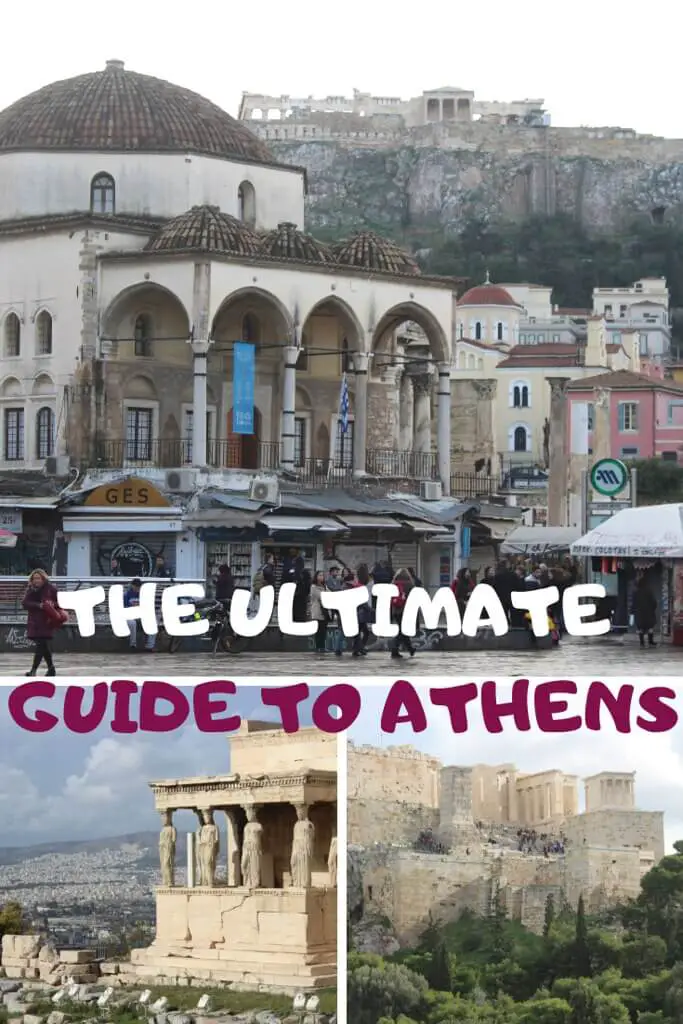
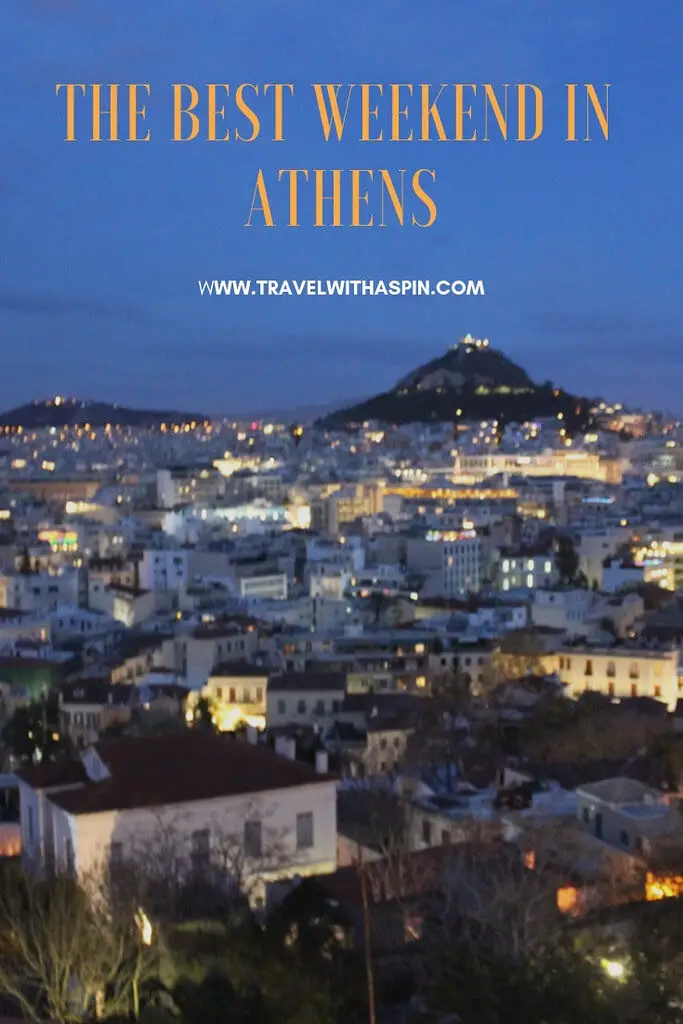
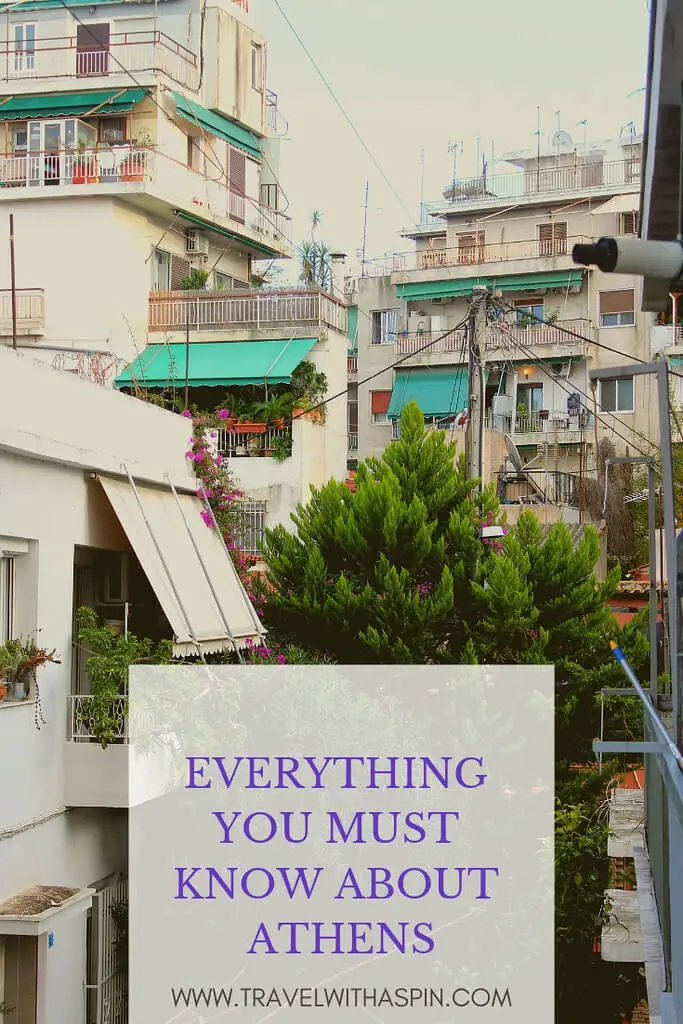
Travel With A Spin contains affiliate links. If you make a purchase through these links, I will earn a commission at no extra cost to you. Thanks for reading!

Great read!
My ex-boss is from Athens. Last year I went to Europe and he really wanted me to go check out Greece but sadly I didn’t have the capacity to.
I will definitely add this on my bucket list as I want to see all the ruins.
Great choice! Hope you will get to see all of them!
So much helpful tips, thanks a lot for sharing! Insider information is always the best. I’ve not yet been in Greece but it’s a #1 on by bucket list.
I’m glad this helps. Thanks!
As a Greek myself, I can tell the guide is so accurate! Great Job! I highly suggest you to visit one of the Greek Islands as well during the summer season!
I’ve visited Thassos few years ago, but I would love to visit others also, of course. Thank you!
Athens is just beautiful, I can’t wait to go back! Your photos are wonderful, thanks for sharing! 🙂